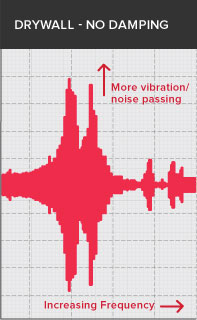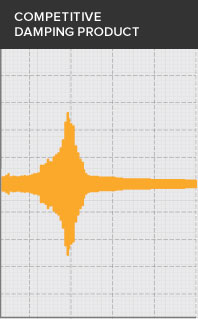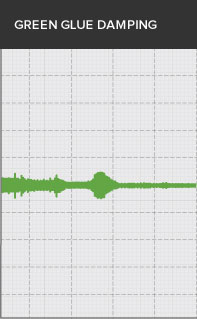Green Glue Noiseproofing Compound: How It Works & Benefits
Posted by BIP / Resourced from The Green Glue Company on 4th Feb 2015
What is GreenGlue Noiseproofing Compound?
GreenGlue Noise-proofing Compound is a unique damping product that is ideal for new construction and renovation projects. It is the most popular and cost-effective soundproofing material on the market. The compound’s unique properties act as a damping material to dissipate the vibrations caused by sound waves as they travel through ceilings, walls and floors. GreenGlue Noiseproofing Compound is non-hazardous, environmentally-responsible, and has practically no odor.
How Does Green Glue Work?
Does Green Glue really work? A lot of people wonder how a simple layer of Green Glue Noiseproofing Compound is so effective at dissipating noise. To understand the science behind the compound you need to understand a little about the energy of sound waves and how they travel.
Noise travels through the air like a wave or an airborne vibration. When these waves hit a ceiling or wall, the vibrations will pass through the structure and exit through the other side as sound again. That is, unless the structure is damped.
Green Glue damping compound has a unique polymeric formula that converts the mechanical energy from sound waves into small amounts of heat. When the compound is sandwiched between two rigid layers of material (like drywall), it forms a damping system. So, when sound waves pass through the structure, the energy is dissipated in the form of heat.
The result is dramatic - just one layer of Green Glue Noiseproofing Sealant in between two sheets of drywall can eliminate up to 90 percent of noise, even at low frequencies. The diagram above illustrates how this damping system works to convert sound energy into heat and provide efficient noise-proofing.
What is Sound Damping?
Damping is one of the most fundamental aspects of noiseproofing a new or existing wall structure. Put simply, damping is about reducing or eliminating stored energy created by sound. If you put up a wall between two rooms and the wall has no damping, sound in one room will simply pass through the wall and enter the next room as sound. If you want to isolate that sound, you want the best damping you can find.
Damping first works by reducing the vibration caused by sound, known as resonance, and then by dissipating this vibration as it travels through a structure like a wall. At most frequencies, a wall’s mass offers resistance to airborne sound, and the heavier the wall the more difficult it is for sound to vibrate the wall’s surface. At some frequencies, however, it is difficult to prevent sound from vibrating surfaces. These frequencies are called resonant points.
If a structure has low damping, sound vibration can travel across it for great distances. In fact, poor damping of common building materials like drywall or wood is largely responsible for the noise problems that homeowners experience.
The comparison charts below illustrate how effectively Green Glue Noiseproofing Compound dampens a wall structure by reducing the energy transfer of noise between one room and another. The soundproofing compound significantly reduces structure-borne sound and also reduces flanking noise.
ADDITIONAL BLOG POSTS RELATED TO THIS ONE:
Size of Hat Channel For Use With Green Glue Noiseproofing Whisper Clips
Keys To Wall Soundproofing: Lesson 1 Decoupling
Green Glue Can Help You Easily Noiseproof Your Apartment Walls
Should I Use Green Glue Tubes or Pails?
How To Properly Install Green Glue Whisper Clips
Key to Soundproofing: Avoiding the Triple Leaf Effect
Best Soundproof Ceiling Options with Green Glue
Comparing Green Glue to QuietRock








